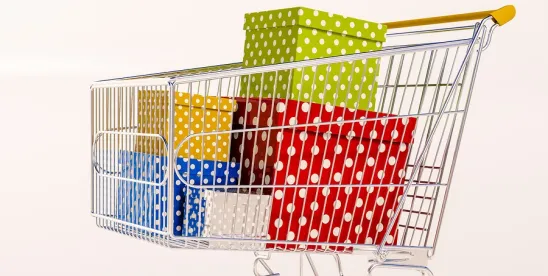| Go-To Guide: |
|
Introduction
On May 22, 2024, the Consumer Financial Protection Bureau (CFPB) issued a significant Interpretive Rule and Request for Comment (the “Rule”) finding that “Buy Now, Pay Later” (BNPL) credit access products are subject to certain requirements of Regulation Z1 under the Truth in Lending Act2 (TILA). Specifically, the Rule determines that (i) digital user accounts (“Accounts”) for access to BNPL products constitute “credit cards” under Regulation Z; (ii) consequently, the issuers of such Accounts (“Lenders”) providing access to BNPL credit are “card issuers” under Regulation Z; (iii) these Lenders are therefore subject to certain regulations in Subpart B of Regulation Z, despite the fact that Subpart B generally applies to open-end credit; and finally (iv) although Accounts for access to BNPL credit constitute “credit cards” under Regulation Z, the Lenders of BNPL credit are generally not subject to the credit card regulations in Subpart G of Regulation Z, but 12 CFR 1026.60 in Subpart G may apply.
Generally, BNPL credit products are “closed-end loans payable in four or fewer installments without a finance charge, used to make purchases on credit.”3 For purposes of the Rule, BNPL means a “consumer loan for a retail transaction that is repaid in four (or fewer) interest-free installments and does not otherwise impose a finance charge. The loan generally requires an initial down payment of 25%, followed by three additional installments due every two weeks.”4
CFPB Rule Follows Years of Study of BNPL Credit Market
BNPL product offerings and consumer usage in the U.S. have exploded in recent years, which has led to thorough regulatory scrutiny by the CFPB and other agencies and industry participants. CFPB began its review of BNPL credit access products with information-gathering inquiries from multiple BNPL providers in 2021. Following this data collection, the CFPB issued a report in September 2022, “Buy Now, Pay Later: Market Trends and Consumer Impacts.” (“Market Trends Report”). The CFPB followed up with a March 2023 report, “Consumer Use of Buy Now, Pay Later” (“Consumer Use Report”), which set forth a review of BNPL consumer financial profiles based on data collected in the CFPB’s annual Making Ends Meet survey. Finally, in March 2024 the CFPB issued its 2023 Consumer Response Annual Report, which, as summarized in the Rule, found “issues consumers faced with merchants regarding BNPL, such as non-receipt of items and challenges in canceling loans.” To demonstrate the rapid growth of the BNPL market, the 2022 Market Trends Report highlighted that it found:
As BNPL products have grown in popularity, other innovations in the payments space have arisen in parallel, such as increasing fintech-bank partnerships; “neo-banks” that solely operate online; increasing e-banking offerings and mobile phone apps; and the use of QR codes for payment processing at the point of sale. The CFPB published a report in August 2022, “The Convergence of Payments and Commerce: Implications for Consumers.”
In addition to these market studies and reports, the CFPB has published multiple blog posts focusing on BNPL products, warning consumers of the risks of relying on BNPL credit, and outlining policy concerns and updates – for example: “Should you buy now and pay later?” in July 2021; “Know before you buy (now, pay later) this holiday season” in December 2021; “Buy Now, Pay Later and Credit Reporting” in June 2022. Needless to say, the CFPB has been focused on the rapid rise of BNPL products and the need for appropriate consumer protection requirements and operational guardrails.
BNPL credit is generally considered to be rather “consumer friendly” compared to other forms of consumer credit due to its ease of use and lack of accruing interest. However, this ease of use has also driven concerns that BNPL products may encourage consumers to more frequently incur BNPL debts, often from different Lenders, which presents risks to consumers.
Application of Regulation Z to BNPL Products
In the Rule, the CFPB concludes that “lenders that issue BNPL digital user accounts are ‘card issuers’ under Regulation Z because the digital user accounts they issue constitute ‘credit cards’ under Regulation Z.”5 Although credit cards are commonly understood as consisting of the conventional physical cards that are used at a retail point of sale, “[t]he definition of ‘credit card’ in TILA and Regulation Z is not limited to a plastic or metal embossed physical card.” (emphasis added.) Indeed, the Rule notes that the term “credit card” as defined in TILA6 and Regulation Z7 includes an “other credit device” or “other single credit device” which are used for obtaining extensions of credit, and “credit card” is already used to include “virtual credit cards where the account number itself is the ‘credit card.’”8 Additionally, while a credit device must be usable from “time to time” to constitute a “credit card” under Regulation Z, the CFPB has determined that a “single-use virtual card . . . would not preclude the credit device from satisfying the ‘time to time’ requirement.9
Accordingly, the CFPB has determined that “Lenders that issue [Accounts] are ‘card issuers’ as defined at 12 CFR 1026.2(a)(7) and ‘creditors’ for purposes of subpart B of Regulation Z, as defined at 12 CFR 1026.2(a)(17)(iii).”10 And although BNPL credit products will constitute “credit cards” and Lenders must comply with certain provisions of Subpart B under the proposed Rule, the Subpart G requirements for credit cards – such as penalty fee limits and ability-to-pay determination requirements – will not apply to BNPL products or Lenders of BNPL credit. The CFPB also stated that BNPL products do not meet certain other definitions applicable to open-end credit, such as 12 CFR 1026.2(a)(20) and 12 CFR 1026.2(a)(15)(ii).
Applicability of Subpart B to BNPL Products
Subpart B of Regulation Z generally applies to, and is titled as, “Open-End Credit.” In the Rule, the CFPB explains why BNPL access products and Lenders thereof nonetheless fall under Subpart B and some of its requirements, noting that a Subpart B provision “specifically states that subpart B also applies to credit that is not open end if, as with BNPL, the credit is not subject to a finance charge and is not payable by written agreement in more than four installments.”11 As noted by the Rule, TILA mandates that “the [CFPB] shall, by regulation, apply [open-end credit] requirements to [card issuers that extend credit with no finance charge that is payable in four or fewer installments] to the extent appropriate, even though the requirements [of the open-end credit provisions] are by their terms applicable only to creditors offering open-end credit plans.”12
While BNPL credit will be governed by applicable provisions in Subpart B, certain inapplicable provisions and portions of Subpart B, such as those covering home-equity plans, will not apply to BNPL products.
As Lenders of credit products subject to Subpart B, BNPL companies must comply with applicable requirements such as:
- Cost of credit disclosures, including account opening disclosures, periodic statements, and other required disclosures;13
- Billing error resolution procedures;14
- Special credit card provisions, including cardholder liability limitations;15
The Rule is silent as to the applicability of the Advertising requirements provision in Subpart B16, but certain portions of it may apply to advertisements for BNPL products. As noted above, the Rule indicates that 12 CFR 1026.60 in Subpart G may apply to BNPL products. Therefore, certain provisions in Subpart B or in other Subparts that are not addressed in the Rule may also apply to BNPL Lenders.
Regulatory Impact, Request for Comments, and Implementation
Given the CFPB’s ongoing scrutiny of BNPL products and the BNPL industry’s impact on the consumer credit market since 2021, the proposed Rule did not arrive unexpectedly. However, it remains unclear whether the Interpretive Rule will prompt significant objection from the industry. Financial Technology Association President and CEO Penny Lee said in a statement that its members “are committed to strong consumer protections, including for disputes and refunds,” but noted that “BNPL products are fundamentally different from credit cards.” Ms. Lee continued:
The CFPB’s determination that BNPL providers are “creditors” under Regulation Z will necessitate that companies review their current processes and procedures to ensure compliance under Subpart B and its applicable requirements. Furthermore, BNPL providers should be aware of any additional complexities involving applicable state consumer credit laws, which the Interpretive Rule may complicate.
The CFPB has included with the proposed Rule a request for comments from the public until Aug. 1, 2024. The Rule may be revised before its final implementation, which will occur 60 days after the Rule’s publication in the Federal Register.
16 12 CFR § 1026.16.




 />i
/>i

